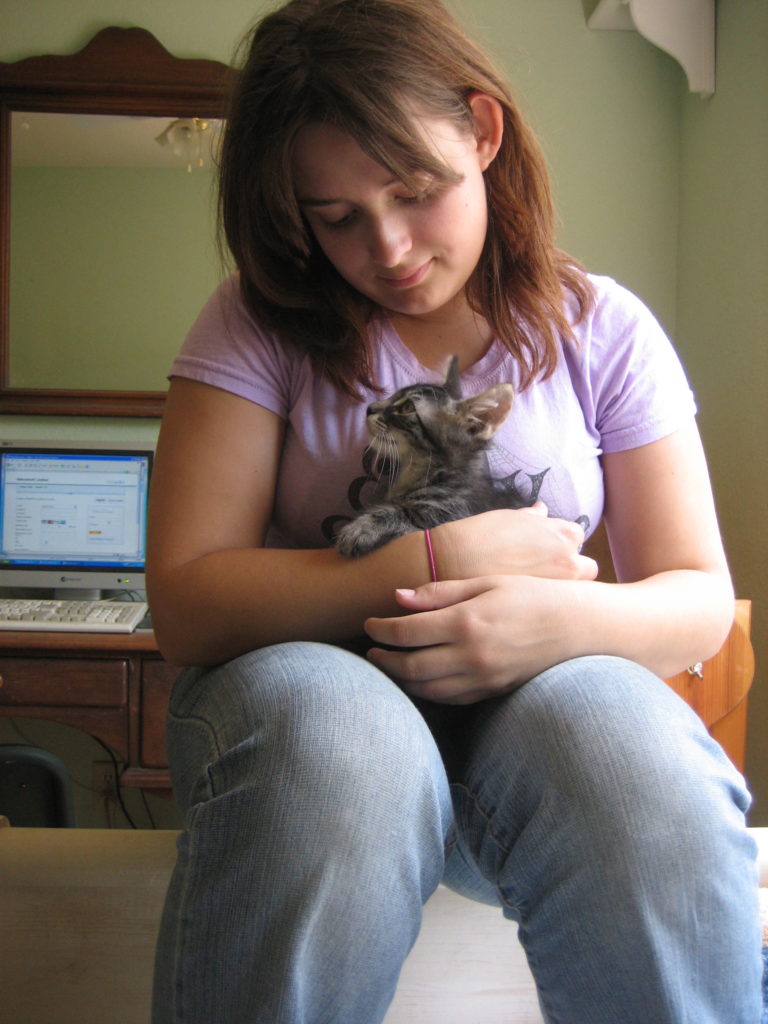Are we hardwired for violence? That is, is it in our nature to be violent? We like to think that we are civilized, and that being civilized means that we are peaceful by nature. Only bad people are violent. Are we all really violent by nature?
Years ago, I was seeing a psychologist to understand why I was not in touch with my feelings. He said I had very strong emotions, but would keep them under control with my intellect. When I get extremely frustrated over something, I feel an urge to be violent, to destroy something. But I abhor destruction, so I quash that urge and replace it with yelling and cursing. I keep it under control. So, my question might instead be, “Are we all really violent by nature and just keep it under control?”
Our government of laws may serve as the way we, as a society, try to keep our violent nature under control. But it is like locking our car; it keeps the “honest” people out. The violence bubbling just under the surface comes out all too often.
All over the news are stories of violence being perpetrated by people upon others, often innocent victims unrelated to those doing them harm. Gangs murder members of rival gangs. Some gangs murder innocent victims, seemingly at random, in order to instill fear among the populace. It seems there are more and more incidences of mass murder, sometimes with no apparent reason.
People who like to fancy themselves as shining examples of civility are doing or suggesting that others do harm to people they disagree with – intolerance in the name of tolerance.
Why are we always going to war? It has been well said, “war is hell.” People are constantly being sent into war, not of their own volition. But many volunteer to join the military, knowing that they may get sent off to kill, or be maimed or killed themselves. What is the drive behind that?
Maybe you are a pacifist, and abhor all wars. But what do you enjoy to do or be entertained by? Two thousand years ago people were watching gladiators fight to the death or lions killing Christians. Have we improved?
Are you into kickboxing or karate? Or maybe you like to watch boxing. OK, so maybe you don’t like either of those. Do you like football, or hockey, or maybe soccer or rugby? Many sports can be pretty violent, or at least cause serious injuries.
Maybe you’re not into sports at all. I don’t really follow sports. But I do go to movies. I don’t like horror movies, but I do like action movies, and they can be full of violent stuff. Star Wars, Indiana Jones, Marvel and DC superhero movies, war, cop or spy movies, Harry Potter, Jurassic Park/World and disaster movies all involve people (or aliens) killing off others or being killed off by some natural disaster or monster. There is often a good versus bad theme that makes the violence seem justified, at least for the “good side.”
What about news programs? Why is there such a focus on death and destruction? It is because that is what we tune in to see, and that gets viewers, ratings, and paid advertisements. Some say that we have a fascination with death and violence. Is it a fascination, or are we trying to satisfy a primordial need?
What do our children see? When I was young, Wile E Coyote, was continually running into cliff faces with painted tunnels or being smashed by an anvil dropped off a cliff by Road Runner. Elmer Fudd was shooting at bugs Bunny. Even Mickey Mouse was being terrorized by Pete.
In more recent years many people have decided that such TV shows are inappropriate for their children. But they happily send them off to the movies. Children’s movies, including virtually all the G-rated Disney fantasies, and the Land Before Time, are chock-full of violence too. It may be evil witches or monsters. It may be carnivorous dinosaurs trying to eat the herbivorous “heroes” or volcanic lava flows threatening them.
So, are we training our children to be violent? Or is it an intrinsic part of our makeup?
As I was thinking about all this, I came across an old copy of U.S. Catholic magazine with the cover story entitled “Of two minds: Is the brain hardwired for faith?”1 The similarity in the title peaked my interest, so I read it. Apparently, some scientists claim to have found a genetic link to a person’s tendency toward spirituality. What they will do with this information if it is confirmed is anyone’s guess. But the question that comes to my mind is “Does a tendency toward violence have a genetic basis?”
Clearly, I’m not the only one asking that question. According to an article in sapiens.org2, anthropologists are arguing whether humans are biologically designed for violence, or whether violence and war are cultural phenomena. Apparently, biological anthropologists tend to favor the former whereas cultural anthropologists favor the latter. Biologist David Carrier of the University of Utah believes that humans have evolved for violence. On the other hand, the article quotes Alisse Waterston, a cultural anthropologist at the City University of New York: “A major takeaway from the anthropological literature is that humans have the potential, which is different from the tendency to be violent.” So, is it cultural? Is it genetic? Or, is it more basic than either?
Let us back up a step. Consider other non-human animals. Our closest relatives, the chimpanzees have battles with rival chimpanzee communities. This includes killing them, male, female and juveniles! This is not an aberration. Many animals fight for territorial or reproductive advantage, often to the death.
In fact, it is common for many or most animals to have a violent death. Mostly, they become a meal for something else (the young, old, and infirm are particularly targeted). This follows all the way down the food chain. Even the herbivores are doing violence to the plants they eat. And plants kill other plants. I am not saying they are evil, just violent, and it is certainly not pleasant for the victims.
So, I guess you could argue for a genetic basis. But violence predates genes, so can it be so basic to our nature that it needs no genetic push?
Natural phenomena like weather, volcanic activity, earthquakes, landslides, and meteor impacts destroy life without regard. But volcanic activity is necessary for the creation and constant renewal of dry land that allows us to be here. Even life in the ocean is dependent upon that aspect of what I call a “living planet.”
Violence is pervasive, not only in our world, but in the universe. From the beginning in an unimaginably colossal explosion (if indeed there was a big-bang beginning) to the ending in one or many black holes, and all the star formations in between, there is violence. This is not the neighborhood where you might choose to bring up your children!
But stars give energy and life through their violent fusion reactions.
If we evolved (God directed or not) through all this, it’s no wonder that we are involved. In order to survive in such surroundings you have to be tough. Kill or be killed. Eat or be eaten. The lion does not lie down with the lamb!
Without our tendency towards violence there would be no murder, no rape, no assaults, no crimes of passion even. So, we are, indeed “of two minds” (as the title of the article in U.S. Catholic implies). On the one hand, we have this inborn tendency toward violence. On the other hand, we long for peace.
Where does that leave us? Can we rid ourselves of the violence that plagues us? I suppose someone will suggest genetic modification.
I remember an old Superman comic book where under the influence of red kryptonite Superman divides into two individuals. One dressed in the usual red on blue outfit and the other in blue on red. Together they had such immense intellectual ability that they figured out a way to stop all the evil in the world. They installed a ring of satellites around the world that emitted some chemical or radiation that affected people to stop their evil ways. I guess for a kid that might sound pretty good. But to me it is mass medicating or irradiating people without their permission. In the same way, genetic manipulation can be something akin to a fascist plan to control people. No, genetic modification is not the way to go.
Some see the answer in religion. But we can’t even agree on what is true and right. Religion is used as a tool by those who lust for power. There is much violence and mayhem perpetrated in the name of religion, and fighting between those with different religious beliefs.
I often think of the song “Universal Soldier” (1964, by Buffy Sainte Marie3, made popular by Donovan, 19654). He’s the one who must decide, who’s to live and who’s to die, and he never sees the writing on the wall.
Those in power would have no power without soldiers to do their dirty work. Without those willing to do violence to others, whether in the name of good or greed, there would be no war.
Pacifism does not solve the problem either. Half a century ago, Hindu monks burned themselves to promote peace. Are we any further toward that end?
I don’t have any answers, just questions. I don’t expect others to have answers either. Yes, this all sounds rather pessimistic. After writing this article, I had second thoughts – more on those in a follow-up posting.
Featured image from Refuge (refuge.org), What is domestic Violence?, artist unnamed.
- Ruth Graham, 2014, Of two minds: Is the brain hardwired for faith? U.S. Catholic, vol. 79, no. 6, pg. 12-17.
- Josh Gabbatiss, 2017, Is Violence Embedded in Our DNA? SAPIENS: Anthropology/Everything Human/Human Nature, https://www.sapiens.org/evolution/human-violence-evolution/.
- Buffy Sainte Marie, 1964, (songwriter) Universal Soldier, see, for example: https://www.youtube.com/watch?v=VGWsGyNsw00.
- Donovan, 1965, (singer) Universal Soldier, see: https://www.youtube.com/watch?v=UC9pc4U40sI.







